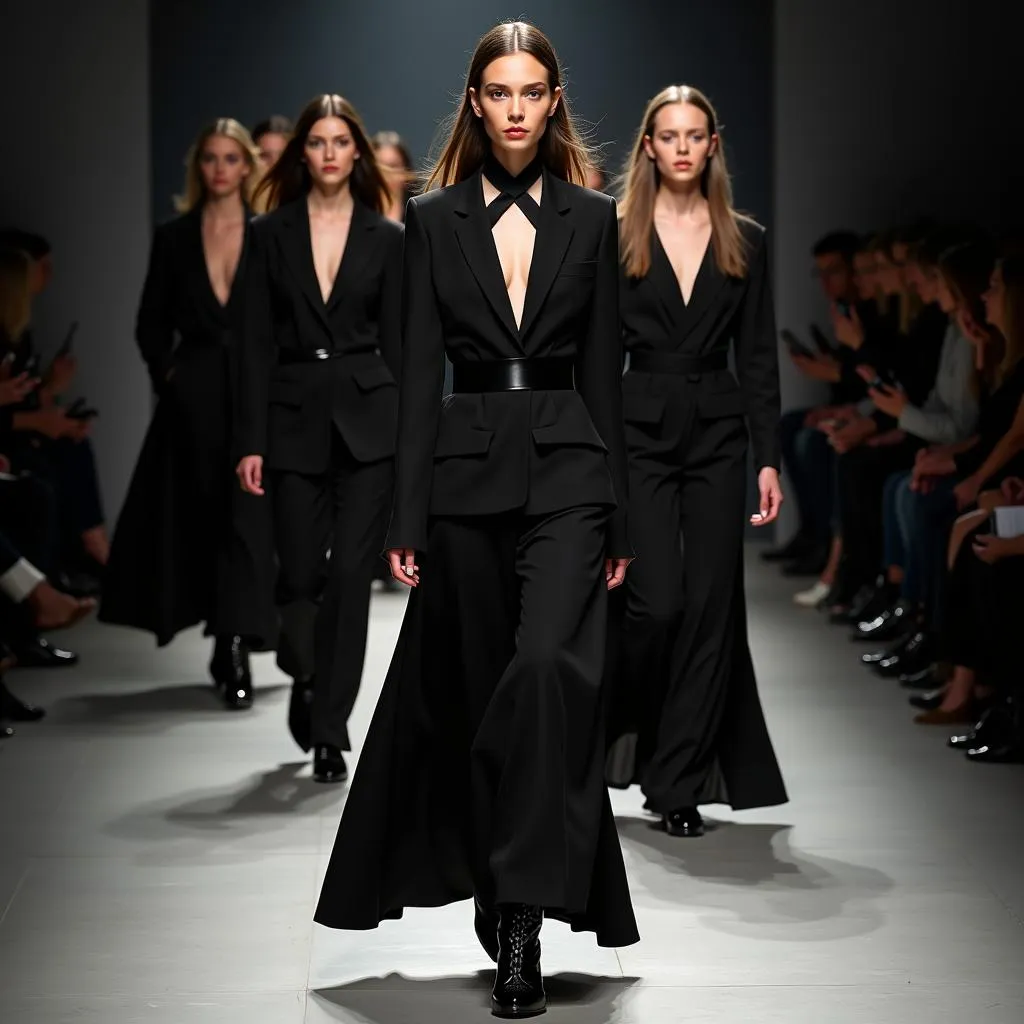The question, “is black the combination of all colors?” often sparks debate and confusion. While black is often associated with the absence of light and the absorption of all colors, the answer is more nuanced than a simple yes or no. Let’s delve into the science of light, pigments, and the fascinating world of color to understand the true nature of black.
The Science of Light and Color
To understand how we perceive black, we need to grasp the basics of light and color. Light, which is a form of electromagnetic radiation, is composed of various wavelengths. When light hits an object, some wavelengths are absorbed, and others are reflected. The wavelengths that are reflected reach our eyes, and our brain interprets them as different colors.
White light, like sunlight, contains all the colors of the rainbow. When white light hits an object that appears red, it absorbs all colors except red, which is reflected. Similarly, a green object absorbs all colors except green.
Now, here’s the catch: black objects absorb almost all wavelengths of light, reflecting very little back to our eyes. This lack of reflected light is what makes us perceive the object as black.
Black in Pigments vs. Light
The concept of black changes when we talk about pigments, which are substances that give color to paints, inks, and other materials. In the world of pigments, black is often created by mixing various pigments together. For example, a common black pigment is made by combining cyan, magenta, and yellow.
So, in the realm of pigments, black can indeed be considered a combination of colors. However, this is different from the way black is perceived in terms of light.
The Perception of Black
Our perception of black is also influenced by factors beyond the physics of light absorption. For instance, the context in which we see an object can affect how we perceive its color. A black object surrounded by brightly colored objects may appear even darker due to contrast.
Cultural associations also play a role. In many cultures, black is associated with darkness, mystery, and power. These cultural perceptions can influence how we interpret the color black, even on a subconscious level.
Different Shades of Black
While we often think of black as a single color, there are actually many different shades of black. These shades can vary slightly in their undertones, which are subtle hints of other colors that influence the overall appearance. For example, a black with a blue undertone may appear cooler than a black with a brown undertone.
 Different shades of black
Different shades of black
The type of material an object is made of can also affect its shade of black. A black velvet fabric will absorb more light than a black leather jacket, resulting in a deeper, richer black.
Black in Art and Design
Black is a powerful color in art and design. It can be used to create contrast, depth, and drama. Artists often use black to define shapes, create shadows, and add a sense of mystery to their work.
In fashion, black is a timeless and versatile color. It can be dressed up or down, and it complements a wide range of skin tones.
 Black in fashion design
Black in fashion design
Is Black a Color or the Absence of Color?
The question of whether black is a color or the absence of color is a philosophical one. Scientifically, black is the absence of light. However, in art and design, black is often treated as a color.
Ultimately, how you choose to define black is up to you. It is a complex and fascinating “color” that plays a significant role in our visual world.
Conclusion
So, is black the combination of all colors? The answer is both yes and no. While black pigments can be created by mixing colors, black, in terms of light, is the absence of all colors. Black’s complexity makes it a captivating and multifaceted element of our visual experience.
FAQs
-
Why does black clothing absorb more heat?
Black objects absorb more light, including the infrared radiation that we perceive as heat. This is why black clothing tends to feel warmer than lighter colors. -
What are some popular shades of black?
Some popular shades of black include jet black, charcoal black, onyx, and ebony. -
Can black be mixed with other colors?
Yes, black can be mixed with other colors to create shades and tints. -
What is the symbolism of black?
Black is often associated with power, mystery, elegance, and sophistication. -
How can I incorporate black into my home decor?
Black can be used as an accent color in furniture, rugs, artwork, and decorative accessories to add contrast and sophistication to your space.
Need help choosing the perfect black paint for your next project?
Contact Color Box Hanoi today! Our team of color experts can help you find the perfect shade of black to complement your style and create the look you’ve always dreamed of.
Phone: 0373298888
Email: [email protected]
Address: 86 Cầu Giấy, Hà Nội
We’re here to help you make your color dreams a reality. We also have experts to guide you on what color can match with red or even what colors make silver paint.
Looking for a stylish tie to go with your dark grey suit? Check out our guide on what color tie with dark grey suit.
Curious about the latest fashion trends? We even have a page dedicated to what color are the ravens wearing today.
Let Color Box Hanoi be your guide to the world of color!

